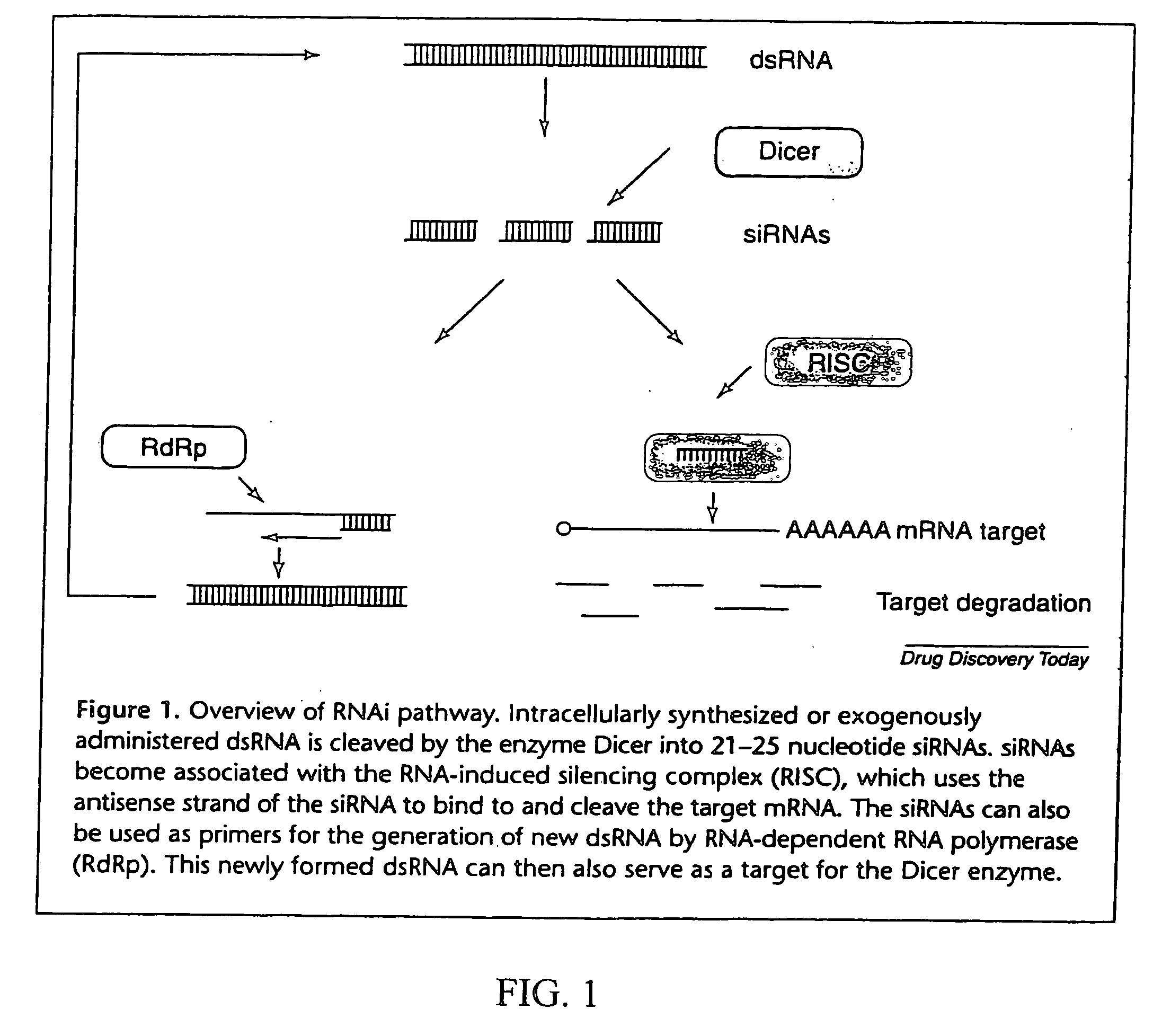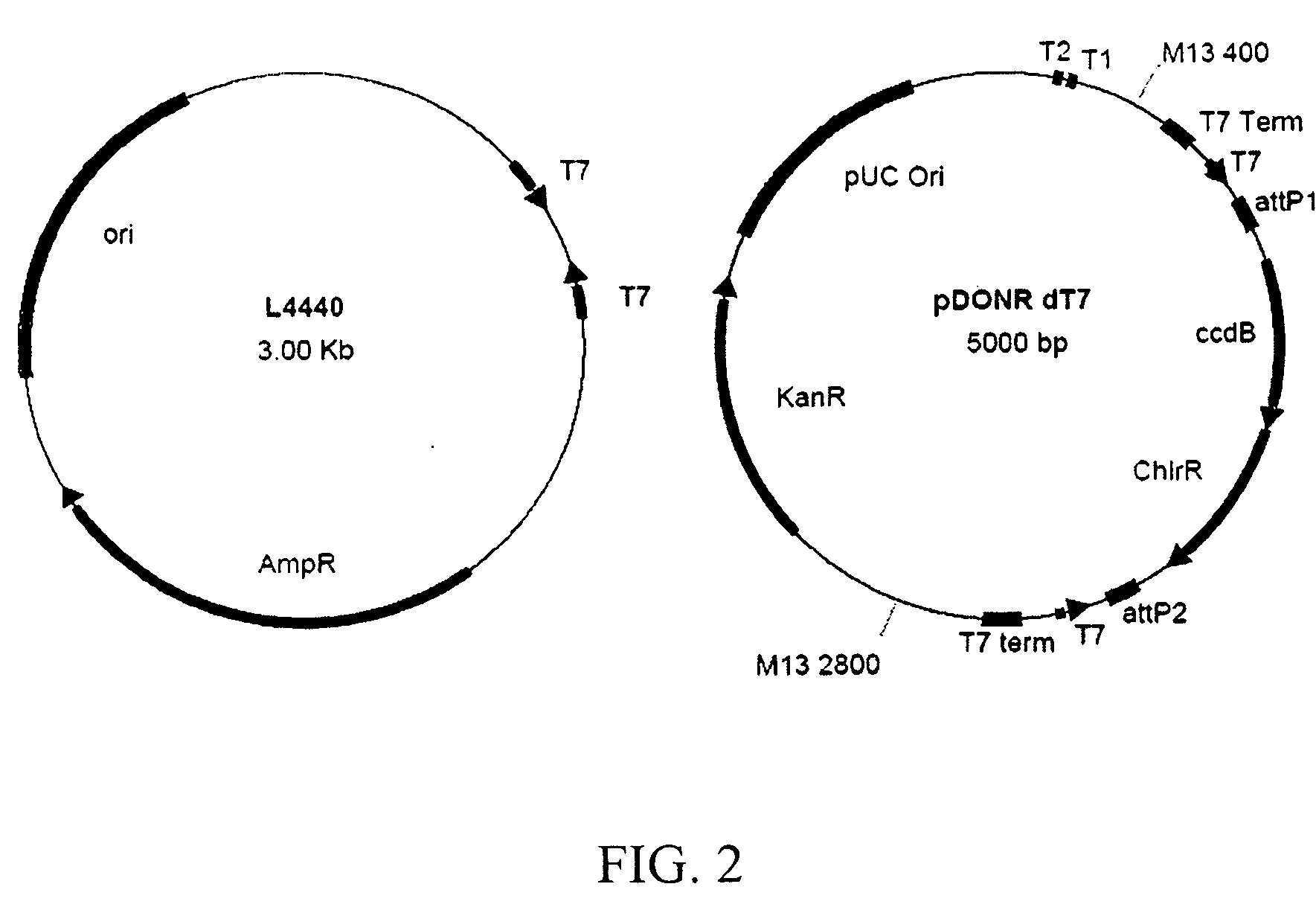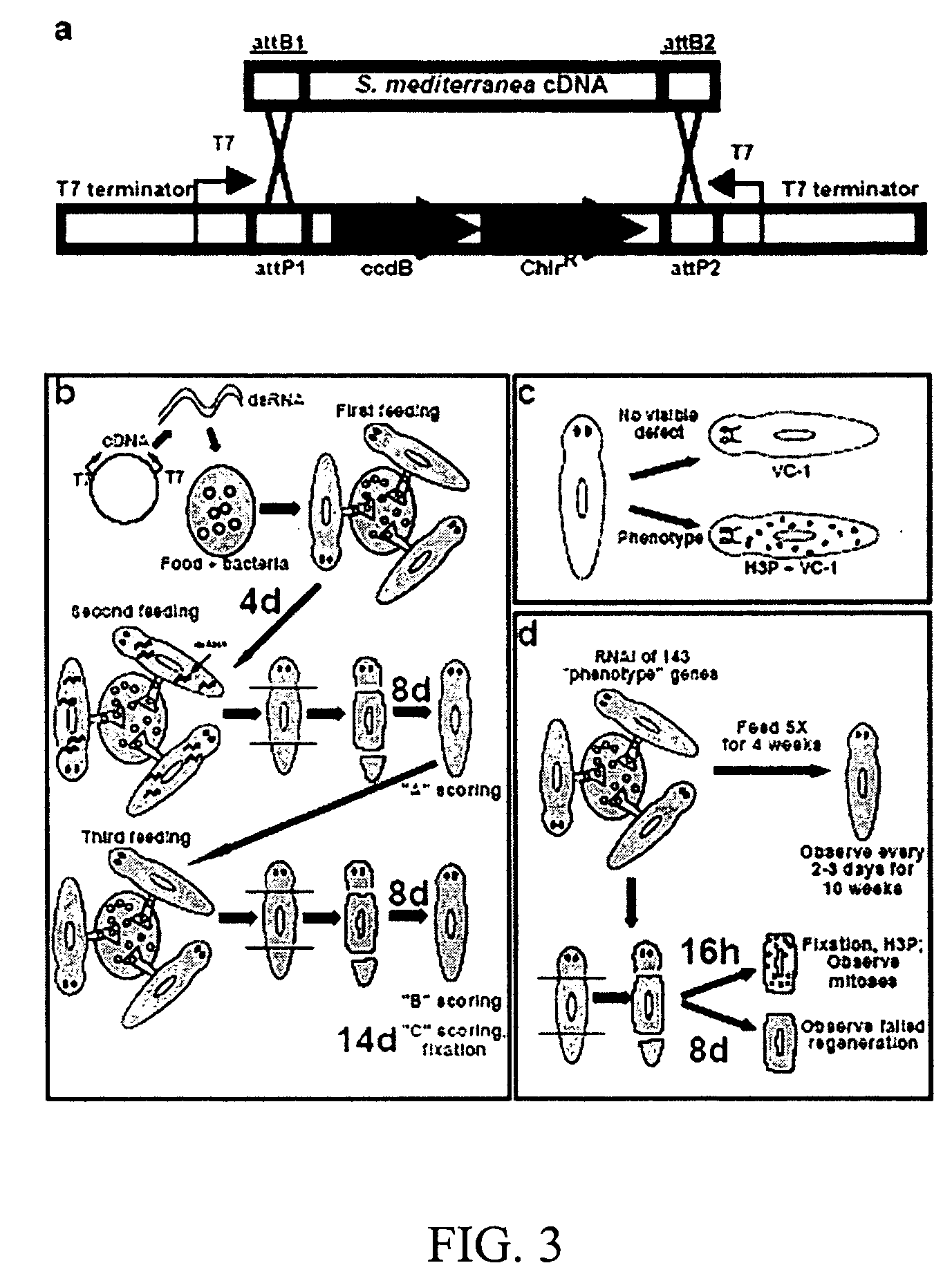Methods and compositions for RNA interference
a technology of interference and composition, applied in the field of biotechnology, can solve the problems of limited success of this strategy, significant delivery problems, and approach precluded by planarian life cycles, and achieve the effects of reducing or inhibiting aberrant transcripts, improving the strength of phenotypic expression and the number of individuals
- Summary
- Abstract
- Description
- Claims
- Application Information
AI Technical Summary
Benefits of technology
Problems solved by technology
Method used
Image
Examples
example 1
Construction of the Plasmid Vector pDONRdT7
[0119] The RNAi vector pDONRdT7, shown in FIG. 2, was constructed for the generation of an S. mediterranea RNAi library. L4440, also shown in FIG. 2, is the standard vector used for feeding bacteria that express dsRNA to C. elegans and has been successfully used for a C. elegans RNAi screen. Two opposing T7 promoters are incorporated that allow for the production of dsRNA. To improve dsRNA production, T7 terminators were utilized to ensure that transcription from the T7 promoters generates only dsRNA from the cDNA insert and not the vector. The current S. mediterranea cDNAs are in a Bluescript vector. These cDNAs can be amplified by PCR using primers that recognize the vector sequence and contain att recombination sequences, and that recombine with the att recombination sites in pDONRdT7 in a single one hour reaction on the bench top. This strategy utilizes the replacement of a toxic ccdB gene with the cDNA for selection in bacteria, and i...
example 2
RNAi of C. elegans unc-22 Gene
[0120] RNAi of the C. elegans gene unc-22 results in a twitching phenotype in adult C. elegans. The unc-22 cDNA was transferred into vector pDONRdT7 using a Gateway recombination reaction (Invitrogen™), and pDONRdT7 was found to be more effective for RNAi than the original L4440 vector, as shown in Table 1, below. pDONRdT7 allows for the efficient cloning of a large number of cDNAs, generally more effective than existing art, and works with 100% efficiency to generate RNAi phenotypes in planarians in this example.
TABLE 1pDONR dT7 is effective for RNAi in C. elegansdsRNA inductiondsRNA inductionconstructin liquidon platesL4440 unc-2226% (9 / 35) 74% (61 / 82)pDONRdT7 unc-2296% (43 / 45)100% (129 / 129)
example 3
RNAi of Planarian PC2 Gene
[0121] PC2 is the planarian pro-hormone convertase 2 gene and is required for proper locomotion. PC2 was transferred into pDONRdT7 using a Gateway® recombination reaction (Invitrogen™), used to produce dsRNA of PC2 in bacteria, which were then mixed with food suitable for planarians (liver homogenate) and fed to the planarians once per day for either one, two or three consecutive days. In all cases, 100% of the subject animals demonstrated a locomotion phenotype after a single round of feeding, as shown in Table 2, below.
TABLE 2pDONR dT7 works for RNAi by feeding in planarians% immobilizedOne round ofTwo rounds ofconstructRNAi feedingRNAi feedingRNA injectionpDONRdT7 PC2100% (20 / 20)100% (20 / 20)100% (20 / 20)
[0122] Thus, the inclusion of transcriptional terminator sequences for both transcripts of the dsRNA results in an increase in efficiency of inhibition. One possible cause of this new and unexpected result is believed to be due to restricting transcript...
PUM
| Property | Measurement | Unit |
|---|---|---|
| molecular weights | aaaaa | aaaaa |
| temperatures | aaaaa | aaaaa |
| temperatures | aaaaa | aaaaa |
Abstract
Description
Claims
Application Information
 Login to View More
Login to View More - R&D
- Intellectual Property
- Life Sciences
- Materials
- Tech Scout
- Unparalleled Data Quality
- Higher Quality Content
- 60% Fewer Hallucinations
Browse by: Latest US Patents, China's latest patents, Technical Efficacy Thesaurus, Application Domain, Technology Topic, Popular Technical Reports.
© 2025 PatSnap. All rights reserved.Legal|Privacy policy|Modern Slavery Act Transparency Statement|Sitemap|About US| Contact US: help@patsnap.com



